Arm Announces New Mali-G710, G610, G510 & G310 Mobile GPU Families
by Andrei Frumusanu on May 25, 2021 10:00 AM ESTThe Mali-G510 & G310: Attacking the low-end
In the mid-range, the new Mali-G510 and Mali-G310 are generational improvements over the market predecessors, the G57 and G31. Representing new major jumps in the microarchitectures, these new designs are unnaturally large performance jumps for Arm’s mid-range and low-end offerings.
From a very high view, the G510 scales up from 2 cores to 6 cores, but offers differentiation through changing the number of clusters within one of the execution units per core, or also changing the type of texture units in use, either a 4x throughput unit, or an 8x unit.
On the execution engine side, we always have two execution engines, but it’s possible to configure down one of them to only contain a single cluster, effectively reducing the compute part of the core from a 64 FMA/cycle design to a 48 FMA/cycle design. The reason for such granularity is that the usual customers for such GPUs have hyper-optimised use-cases and will configure their GPU implementation for a specific use-case and criteria, and only use the bare minimum configuration to fulfil those demands, in the smallest possible area.
Arm here puts an emphasis on the 10 different configuration options of the G510 IP, all having different compute or fill rate optimised performance points. It might be quite a bit unintuitive for the every-day reader to understand the need for such configurability, but there are non-mobile markets which really care about every fraction of a mm² when it comes to implementations.
Scaling further below the G510 is the new G310. This GPU is actually a major performance leap compared to the previous generation smallest Mali IP offering, the G31, as we’re seeing the move from a Bifrost architecture to the new Valhall design.
Here, we’re seeing adoption of the new execution engine design, but allowing to further scale down the clusters to only one per EE, and also allowing only one EE in the minimum configuration, allowing scaling of 16, 32, 48 or 64 FMA per shader core. The texture units also scale down to 2 texels/cycle units at minimum, and also seeing a varying unit that’s scaled down compared to its bigger siblings.
The G310 is exclusively a single shader core design, so the configurations are exclusively achieved through changing the different execution units within that core. Unfortunately Arm doesn’t seem to plan out any public naming scheme for the various configurations, so it will be all up to the vendors to actually do any kind of disclosure.


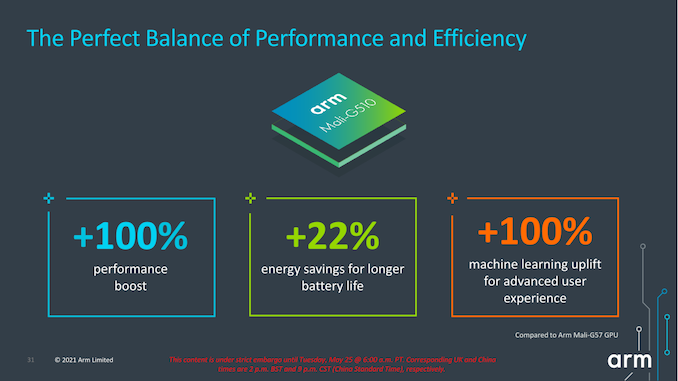
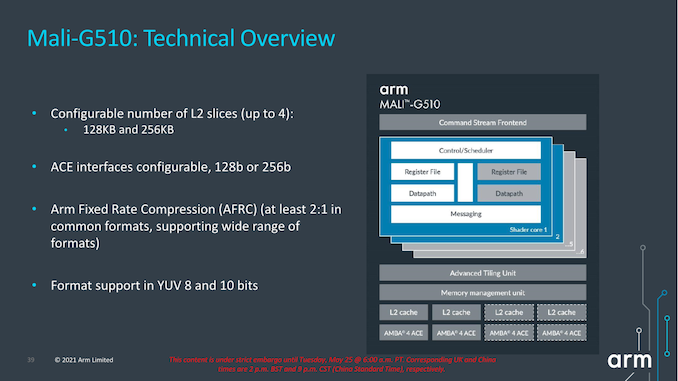
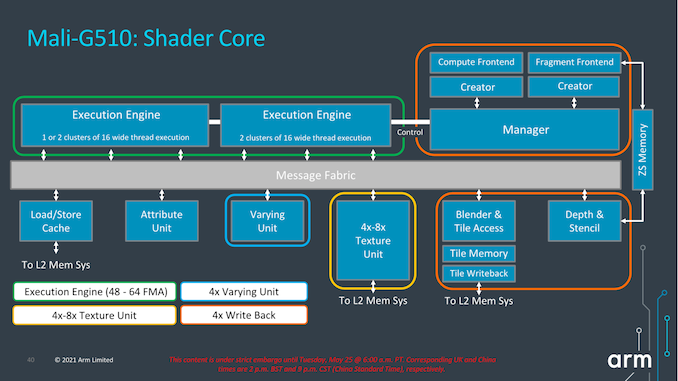
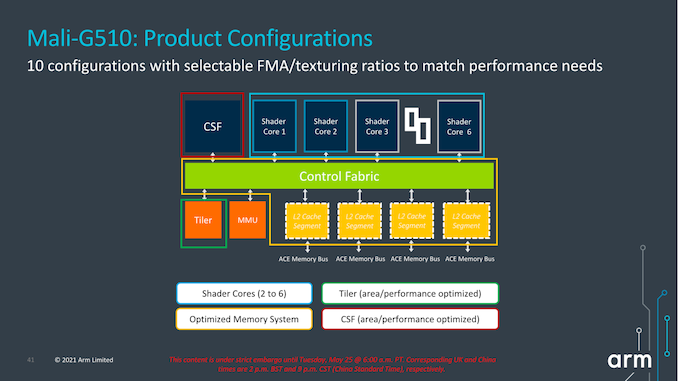
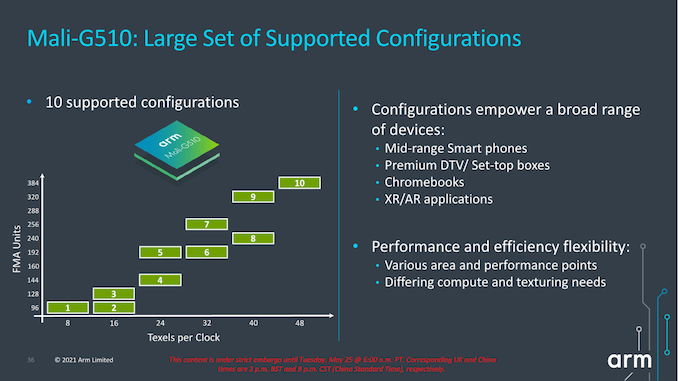
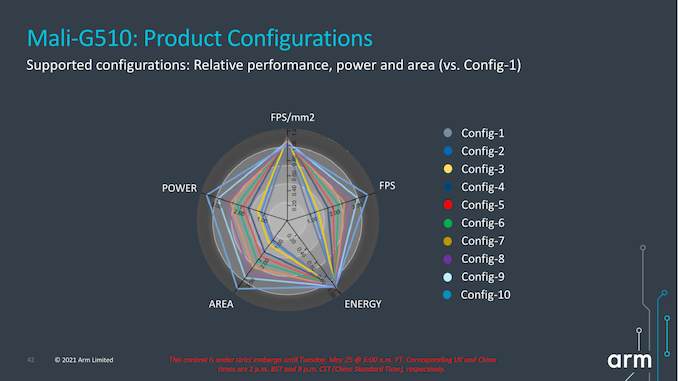
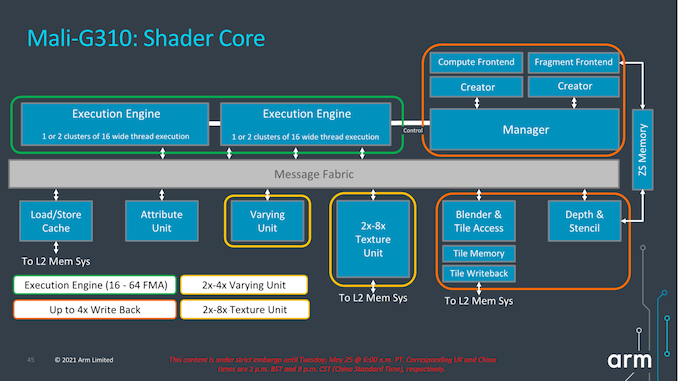
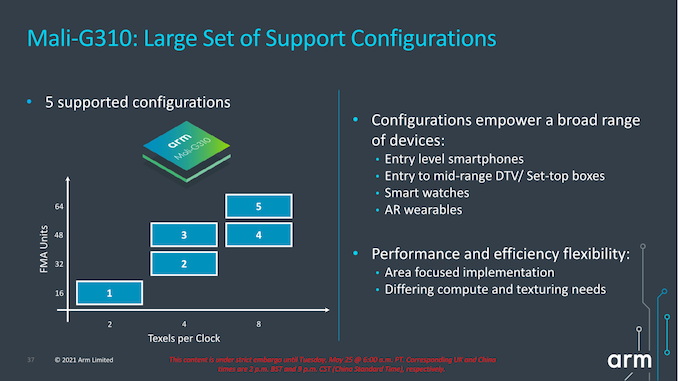








30 Comments
View All Comments
mode_13h - Saturday, May 29, 2021 - link
Good points, but Imagination demo'd ray tracing many years ago. It'd be interesting to know if they had some unique tech, or if the implementation was just too limited for modern games.t.s - Tuesday, May 25, 2021 - link
"Conclusion & 1st Impressions" Last paragraph: "If those DTV markets hare numbers are accurate" -> 'hare' minus s.James5mith - Tuesday, May 25, 2021 - link
I think it was supposed to be market share, not markets hare.eastcoast_pete - Tuesday, May 25, 2021 - link
Thanks Andrei. Question about Imagination: did they have any design wins recently? It's been awfully quiet.ToTTenTranz - Tuesday, May 25, 2021 - link
Did Nvidia give up on purchasing ARM?If not, there's a bit of a white elephant in the room.
eastcoast_pete - Tuesday, May 25, 2021 - link
I believe that NVIDIA wouldn't want to have its precious CUDA cores "slumming" it in $ 100 smartphones, so they probably hang on to Mali just for this.brucethemoose - Tuesday, May 25, 2021 - link
If it make them money, why not?But there is the question of how low it can go. Would something much, much smaller than a Switch Tegra be competitive with low end Mali?
mode_13h - Wednesday, May 26, 2021 - link
You heard Mediatek is licensing Nvidia graphics IP? Granted, probably not in $100 phones, but maybe $250? I guess we'll see.BTW, you know CUDA cores are in their $100 Jetson boards and Nintendo Switch, right?
Wereweeb - Wednesday, May 26, 2021 - link
That's not how this kind of business works. No one knows what the future holds.Dahak - Wednesday, May 26, 2021 - link
Its still going through the regulatory checks, it will be at least a year before its finalized if its approved and even more it will be a few years on top of that before we see any nvidia IP offered / licensed like ARM's if Nvidia decides to do that.Just because they are acquiring ARM does not mean magically Nvidia's GPU IP will replace the current if at all